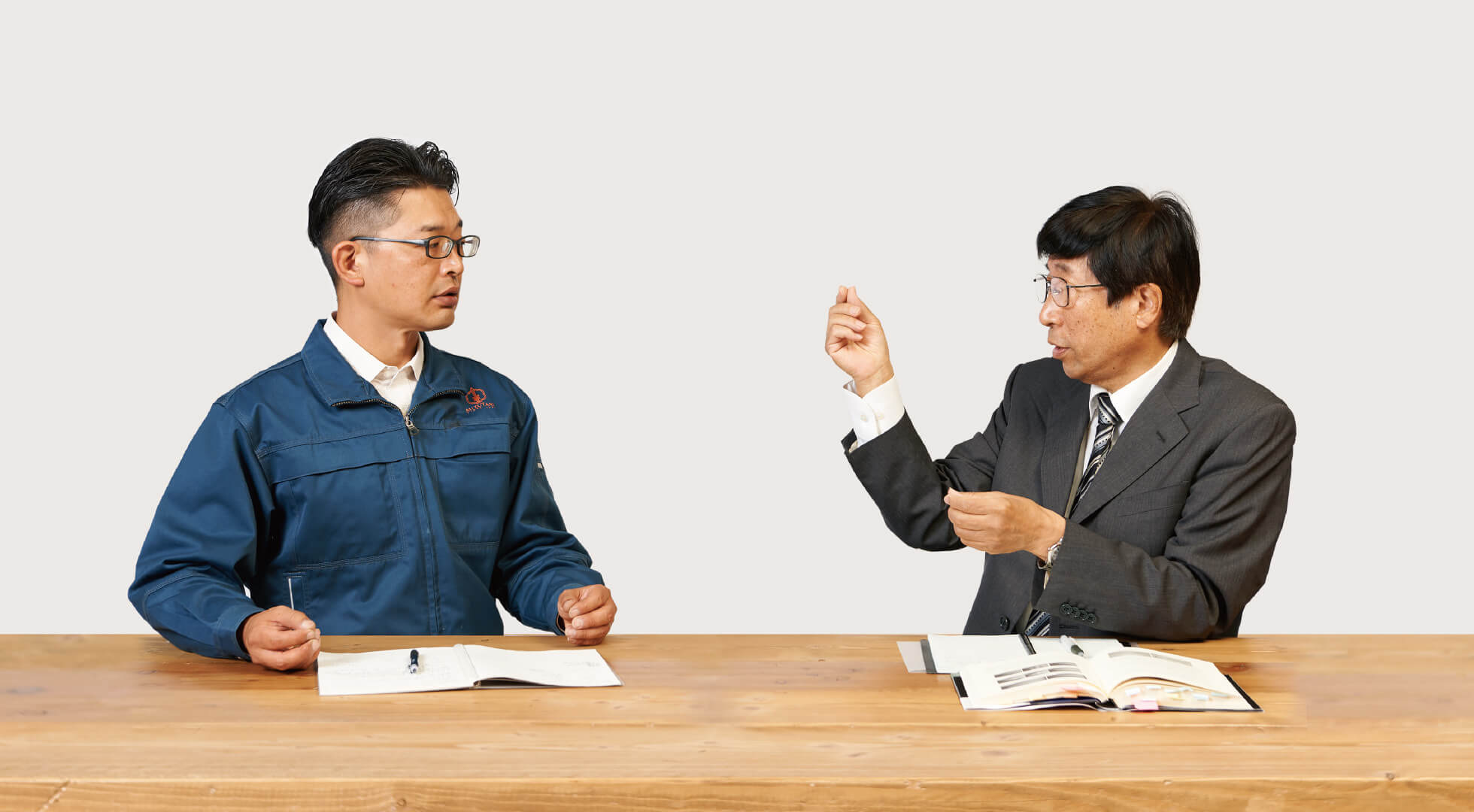
 Products
NEW PRODUCTS
Products
NEW PRODUCTS- SCHOREM MASTER BRUTALIST BLENDING THINNING
- cosine mini MALACHITE Staygold
- SCHOREM MASTER ORIGINAL SM-02
- New Fit / New Fit THINNING
- CROSSOVER GANYMEDE
- CROSSOVER ANTIQUE PINK
- SERENITE
- NEW DAMA
- NEW SWIVEL
- NEW SWORD DB-20/DB-21
- Stephen Moody Competition Winning II
FEATURED PRODUCTSCUT SCISSORSTHINNING SCISSORSOTHERSSERIES 360ºMIZUTANI
NEWSEDU SEMINARMOYO ShowroomSUPPORT
360ºMIZUTANI
NEWSEDU SEMINARMOYO ShowroomSUPPORT
TOP > What kind of steel is the special steel “Nano Powder Metal”?

What kind of steel is the special steel “Nano Powder Metal”?
Asked Dr. Asakura of the University of Tokyo to find out more!

Right : Dr-Eng. Kentaro ASAKURA, Materials Engineering Dept., Graduate School of Engineering, The University of Tokyo Graduate School
(Part-time instructor at the University of Human Arts and Sciences)
Left : Takuya SHIBATA, Research & Development Dept., MIZUTANI SCISSORS Mfg., Co., Ltd.
(Part-time instructor at the University of Human Arts and Sciences)
Left : Takuya SHIBATA, Research & Development Dept., MIZUTANI SCISSORS Mfg., Co., Ltd.
